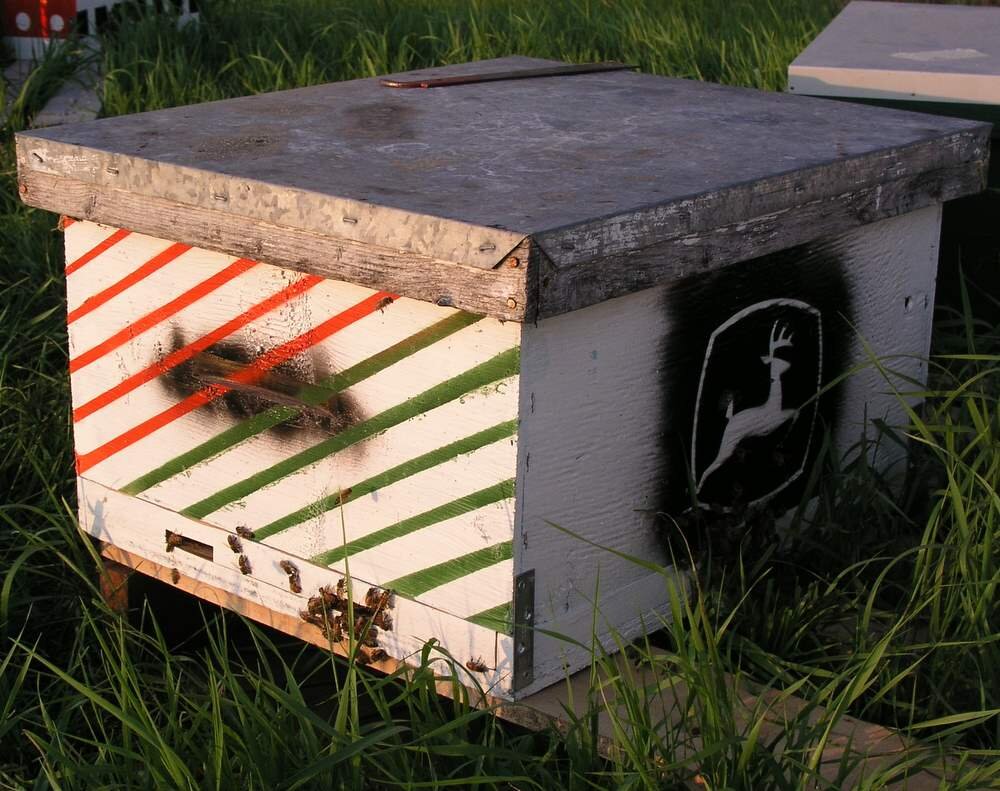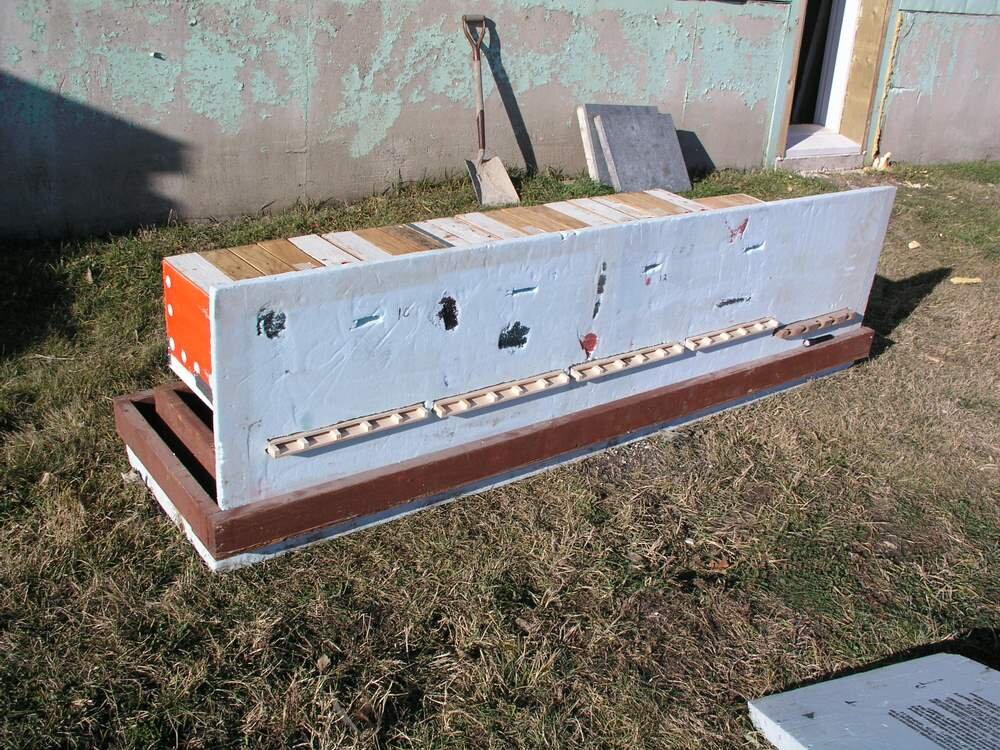Wintering 2 Frame Nucs.
Wintering box for housing 2 frame nucs during winter.
It is possible to winter 2 frame nucs in Manitoba successfully. This method has been developed by the veteran beekeeper Ted Scheuneman. I’ve modified it slightly to fit my beekeeping operations but the gist of it is still here. The wintering loss for this method is around 15-20%. Which is about the average for a standard hives in Manitoba. From my understanding wintering these nucs inside doesn’t work because the bees think it’s warm outside and start rearing too much brood too early. When you keep them outside they know what the temperature is like outside by the air coming in through the front entrance. The hive is made using standard dimensions, that way you don’t have boxes around that just doesnt quit fit the rest of your equipment. A standard box is made to hold 10 frames in 5 separate compartments. 4 pieces of 1/8 plywood dividers are used to separate the nucs. In order for it all to fit inside one box the outside walls have to be reduced to 3/8″ thick. It’s not that easy to work with that kind of limited space, but with a frame puller it works.
The nucs are made up in summer. If you do it early in summer you can get a super or two of honey off of them. If you make them later in the season just make sure they are nice and strong towards the end of fall The tops of the individual nucs have a lid with hole in the middle with a plug. If the nucs get big and there is a honey flow on you can remove the plugs and but a queen excluder on top and then a super When removing the supers in fall make sure you place a hive top feeder on them right away. The nucs consist of mainly brood and has very little honey. Most of the honey was stored on top in the super. I usually start feeding them in the last week of August
Wintering stand with heating cable layed out underneath the hives.
Styrofoam sides in place ready for the top insulation and lid.
.
The wintering box that houses the hives all winter is made to hold 5 standard hives. 5 hives, time 5 nucs per box would come to 25, two frame nucs in one wintering box. The wintering boxes can also be used to winter standard boxes.
The wintering box in this case has a heating cable underneath and a thermostat control on one end to keep the temperature just above freezing, around 4°C (39°F).
The entrances are all closed and a special entrance is used in front of the hives. This provides excess to the outside for each individual nucs with a mini landing board for each nuc.
Wintering box completely set up.
In the middle of winter with the tarp thrown back.
Now comes the tricky part. Working with bees in late winter. Some of the nucs will start running low on food. In order to increase the winter success rate you have to give them frames of honey/pollen. So on the first nice day in late winter when the temperature hovers around 0°C (32°F) the nucs are re-hived. By this time they will have a small amount of brood. Three nucs out of every hive are taking and placed in a bigger hive with additional frames of honey and pollen. These nucs are either moved to a new wintering box or moved indoors. The temperature on the thermostat is also turned up to 15°C (59°F). The two remaining nucs are given two frames of honey and the plywood divider is slide out to increase their hive size. This operation has to be done quickly and efficiently, otherwise the brood will get chilled. It does feel strange to be opening hives and pulling out frames with snow on the ground, but it does work surprisingly well. The hives are then left to grow until they are too big for their nuc boxes. They are then transferred into standard hives and with careful manipulation according to the weather, they grow into a full sized hives before the honey flow starts. These hives have brought in over 200LBS of honey that same year. It does take more work, but if done correctly you will have around 25 hives coming out the winter with this method.






